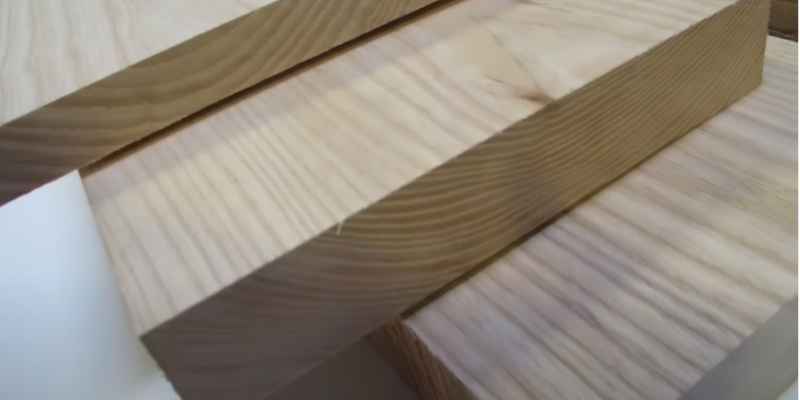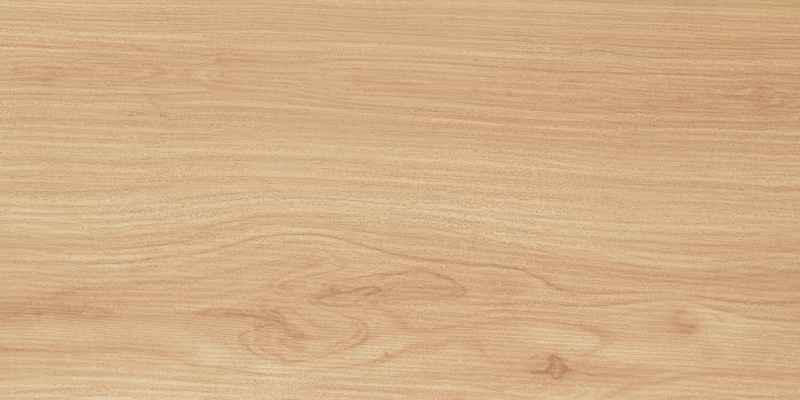Ash wood is strong and resilient, making it ideal for solid wood furniture and tool handles. Its open grains make it less suitable for ultra-smooth finishes, and it is not recommended for outdoor use due to susceptibility to insects and fungus.
Ash is commonly used for furniture, flooring, doors, tool handles, and sports equipment like baseball bats and hockey sticks. With its light color and smooth grain, it is a popular choice for interior woodworking projects. Ash wood’s density and porosity are similar to white oak, making it a versatile and underrated material for various applications.
The Essence Of Ash Wood
Ash wood is a versatile and durable hardwood known for its strength and resilience. Its exceptional properties make it a popular choice for various applications, from furniture and flooring to tool handles and sports equipment.
Characteristics And Color
- Ash wood is gray-brown in American ash and creamy white to light brown in European ash.
- It is smooth-grained with a typical straight grain pattern.
- Resistant to moisture and shock but susceptible to insects and fungus when exposed to soil.
Ash Wood Grain And Texture
Ash wood has a distinctive grain pattern that adds character to the wood. The texture of ash wood is generally smooth, making it ideal for furniture and decorative woodworking projects. Its open grains provide a unique appearance but can be a drawback for achieving a super smooth finish.

Geographical Growth: Where Ash Thrives
Ash wood, known for its strength and resilience, is ideal for furniture, flooring, and tool handles. With its light color and smooth grain, it’s a popular choice for woodworking and various applications. Ash wood’s open grains make it susceptible to insects and fungus, but its durability makes it a great option for indoor use.
American Ash Vs. European Ash
When it comes to ash wood, there are two main species: American ash (Fraxinus americana) and European ash (Fraxinus excelsior). The primary difference between the two is their color. American ash is typically gray-brown in color, while European ash ranges from creamy white to light brown. American ash is also slightly harder than European ash, making it a popular choice for furniture and flooring.
Ideal Conditions For Ash Trees
Ash trees are native to North America, Europe, and Asia, and can grow in a wide range of conditions. They prefer well-drained soil and full sun, but can also grow in partial shade. Ash trees are tolerant of many soil types, including loamy, sandy, and clay soils.
In terms of climate, ash trees can thrive in both hot and cold temperatures. They are hardy in zones 3-9 in North America, and can withstand temperatures as low as -40°F (-40°C).
Overall, ash trees are a hardy and adaptable species that can grow in a variety of conditions.
Ash trees are found in many parts of the world, including North America, Europe, and Asia. In North America, they are most commonly found in the eastern and central regions of the continent, from Canada down to Texas. In Europe, ash trees are found throughout the continent, from Scandinavia down to the Mediterranean.
Ash trees are known for their resilience and strength, which makes them a popular choice for a variety of applications, from furniture and flooring to tool handles and sports equipment. In recent years, however, ash trees have been threatened by the emerald ash borer, an invasive species of beetle that has caused significant damage to ash tree populations across North America.
Despite these challenges, ash wood remains a popular choice for many woodworkers and craftsmen, thanks to its unique color, grain, and strength.
Ash Wood In Use: From Ancient To Modern Times
Ash wood has been prized for its exceptional qualities and has been utilized in various ways throughout history. From ancient civilizations to modern times, this versatile wood has played a significant role in both functional and artistic applications.
Historical Significance
Ash wood holds great historical significance, with evidence of its use dating back to ancient civilizations. In ancient Egypt, ash wood was used to construct furniture, boats, and even chariots. The ancient Romans also recognized the strength and durability of ash wood, using it for construction purposes, including building structures such as aqueducts and bridges.
During the Middle Ages, ash wood became a popular choice for making weapons due to its resilience and shock-absorbing properties. The wood was used to craft spears, bows, and even shield frames. Its flexibility and strength made it an ideal material for these purposes.
Contemporary Applications
Ash wood continues to be highly valued in modern times for its versatility and aesthetic appeal. It is commonly used in furniture making, particularly for solid wood furniture. The strength and durability of ash wood make it an excellent choice for pieces that need to withstand regular use and last for generations.
Aside from furniture, ash wood is also popular in the construction industry. It is used for flooring, doors, cabinetry, and architectural moldings. Its light color and smooth grain pattern add a touch of elegance to any interior design.
Additionally, ash wood has found its way into various sporting goods. It is renowned for its use in baseball bats and hockey sticks due to its strength and flexibility. The wood’s natural shock-absorbing properties make it perfect for these high-impact sports.
Furthermore, ash wood is utilized in tool handles, owing to its strength and ability to withstand heavy-duty use. Many professionals and craftsmen prefer ash wood handles for their tools due to their durability and ergonomic qualities.
Ash wood’s historical significance and its continued use in contemporary applications highlight its exceptional qualities and versatility. Whether it’s in furniture, construction, or sporting goods, ash wood continues to be a popular choice for its strength, resilience, and aesthetic appeal.
Comparative Analysis: Ash Wood Against Others
Ash wood is renowned for its strength and resilience, making it an excellent choice for solid wood furniture. Unlike teak, ash wood has open grains, which can affect the furniture texture. It’s commonly used for furniture, flooring, doors, and sports equipment due to its durability and versatility.
Ash wood is one of the most popular choices for furniture makers due to its strength, durability, and unique properties. In this section, we will compare ash wood against other popular woods and see how it stacks up.
Ash And Oak: A Comparative Study
Ash and oak are two of the most popular hardwoods used in furniture making. While both have similar properties, there are a few key differences. Ash is known for its flexibility and shock resistance, making it an excellent choice for tool handles and sports equipment. Oak, on the other hand, is known for its hardness and durability, making it a popular choice for flooring and outdoor furniture. In terms of appearance, oak has a more pronounced grain pattern, while ash has a more subtle grain.
Unique Properties Of Ash Wood
Ash wood has several unique properties that set it apart from other hardwoods. One of the most notable is its elasticity, which makes it an excellent choice for curved furniture pieces. It also has a natural resistance to splitting, which makes it a popular choice for tool handles and sports equipment. Additionally, ash wood has a high shock resistance, which makes it an excellent choice for furniture pieces that need to withstand regular use.
In summary, ash wood is a versatile and durable hardwood that has many unique properties. While it may not be as hard as oak, it has a natural flexibility and shock resistance that make it an excellent choice for furniture makers. Whether you are looking to create a curved chair or a sturdy tool handle, ash wood is a great choice for your next project.
Advantages Of Choosing Ash Wood
Ash wood is a strong and resilient timber, making it an excellent choice for solid wood furniture, flooring, doors, and cabinetry. It is also used for tool handles, baseball bats, and hockey sticks due to its shock resistance. However, it has open grains and is susceptible to insects and fungus, making it unsuitable for outdoor furniture.
Durability And Resilience
Ash wood is renowned for its strength and resilience, making it ideal for solid wood furniture.
Aesthetic Appeal
Ash wood offers a beautiful aesthetic with its light color and smooth grain pattern.
Challenges And Solutions For Ash Wood
Ash wood is a popular choice for furniture, flooring, and various wood products due to its strength and resilience. However, like any material, it comes with its own set of challenges. Understanding and addressing these challenges is crucial for effectively utilizing ash wood in various applications.
Pest And Disease Management
Ash wood is susceptible to pests and diseases, posing a significant challenge for its utilization. The emerald ash borer, in particular, is a notorious pest that has devastated ash tree populations in various regions. To manage these issues, regular inspection and timely treatment are essential. Additionally, utilizing pest-resistant varieties of ash wood can help mitigate the risk of infestation and disease.
Preventing Moisture Damage
Moisture damage is a common concern for ash wood, especially in applications where it is exposed to environmental elements. Proper sealing and finishing of ash wood products are critical to protecting them from moisture-related issues. Moreover, maintaining appropriate humidity levels in indoor environments can help prevent warping and decay in ash wood furniture and flooring.
Sustainability And Environmental Impact
Ash wood is renowned for its strength and resilience, making it an excellent choice for solid wood furniture. It is used for furniture, flooring, doors, cabinetry, tool handles, and even baseball bats. However, it has open grains and is susceptible to insects and fungus when exposed to soil, making it unsuitable for outdoor furniture.
The Emerald Ash Borer (EAB) is an invasive beetle that has caused significant damage to ash trees across North America. It poses a severe threat to the sustainability of ash wood. EAB larvae feed on the inner bark of ash trees, disrupting the tree’s ability to transport water and nutrients, ultimately leading to the tree’s demise.
Sustainable sourcing of ash wood involves the careful management of forests to ensure the long-term viability of ash tree populations. By adhering to sustainable practices, such as selective harvesting and reforestation, the environmental impact of ash wood production can be minimized.
The Emerald Ash Borer Threat
The Emerald Ash Borer (EAB) is an invasive beetle that has caused significant damage to ash trees across North America. It poses a severe threat to the sustainability of ash wood. EAB larvae feed on the inner bark of ash trees, disrupting the tree’s ability to transport water and nutrients, ultimately leading to the tree’s demise.
Sustainable Sourcing Practices
Sustainable sourcing of ash wood involves the careful management of forests to ensure the long-term viability of ash tree populations. By adhering to sustainable practices, such as selective harvesting and reforestation, the environmental impact of ash wood production can be minimized.
Crafting With Ash: A Guide For Woodworkers
Ash wood is a popular choice for woodworking due to its strength and resilience. Craftsmen appreciate its versatility and workability, making it suitable for a wide range of projects. Whether you’re creating furniture, flooring, tool handles, or other woodcrafts, understanding how to select the right ash wood and apply finishing techniques is essential for achieving the best results.
Selecting The Right Ash Wood
When selecting ash wood for your woodworking project, consider the following factors:
- Color and Grain: American ash is gray-brown, while European ash is creamy white to light brown. Assess the color and grain pattern to ensure it aligns with your design aesthetic.
- Quality: Inspect the wood for any signs of damage, such as knots, warping, or cracks. Choose high-quality, straight-grained ash wood for better structural integrity.
- Moisture Content: Opt for well-seasoned ash wood with an appropriate moisture content to prevent future warping or shrinkage.
Finishing Techniques For Ash
Applying the right finishing techniques can enhance the natural beauty of ash wood and provide long-lasting protection. Consider the following finishing methods:
- Sanding: Begin with coarse sandpaper and gradually progress to finer grits to achieve a smooth surface.
- Staining: Enhance the color of ash wood with wood stains to achieve the desired shade and tone.
- Sealing: Apply a protective sealant to guard against moisture and wear, extending the lifespan of the wood.
- Polishing: Finish the wood with a high-quality polish to achieve a lustrous and professional appearance.

Frequently Asked Questions
Is Ash A Good Quality Wood?
Yes, ash wood is a good quality wood known for its strength and resilience. It is commonly used for solid wood furniture, tool handles, flooring, doors, and sporting equipment such as baseball bats and hockey sticks. However, its open grains make it less suitable for ultra-smooth furniture textures, and it is susceptible to insects and fungus when exposed to soil, making it unsuitable for outdoor furniture.
What Is The Disadvantage Of Ash Wood?
Ash wood’s open grains can hinder achieving an ultra-smooth texture. It is vulnerable to insects and fungus, especially when exposed to soil, making it unsuitable for outdoor furniture.
What Is Ash Wood Best Used For?
Ash wood is best used for furniture, flooring, doors, cabinetry, architectural moulding, tool handles, baseball bats, hockey sticks, oars, turnings, and veneer. It is also popular for food containers because it has no taste.
What Wood Is Ash Similar To?
Ash wood is similar to Sassafras wood due to its color and grain pattern resemblance.
Conclusion
Ash wood is a versatile and durable material suitable for various applications. From furniture to sports equipment, Ash’s strength and resilience make it a popular choice. Its unique characteristics and aesthetic appeal set it apart as a top choice for woodworking projects.


